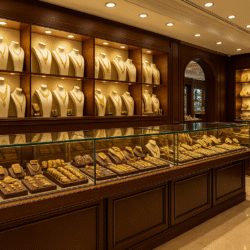Brass is one of the most popular alloys used in various industries for its strength, corrosion resistance, and versatility. It is made by combining copper and zinc in different proportions to achieve desired properties. Among the many brass alloys available, Brass 63/37 Tubes and Brass 70/30 Tubes are two of the most commonly used types. While they may look similar, they have distinct characteristics that make them suitable for different applications. Understanding the differences between them helps in choosing the right material for specific industrial or engineering needs.
This blog explains the key differences between Brass 63/37 Tubes and Brass 70/30 Tubes, their composition, properties, and applications in simple and easy words.
Composition
The most basic difference between Brass 63/37 and Brass 70/30 lies in their chemical composition. Brass 63/37, also known as Cartridge Brass, contains about 63% copper and 37% zinc. This balanced combination gives it a good mix of strength, ductility, and corrosion resistance.
On the other hand, Brass 70/30, sometimes referred to as Admiralty Brass, has approximately 70% copper and 30% zinc. The higher copper content provides better corrosion resistance, especially against seawater and industrial atmospheres, making it more suitable for marine and condenser applications.
In simple terms, the more copper in the alloy, the better the resistance to corrosion, but the lower the hardness. This difference in composition affects the mechanical and physical properties of both types of brass tubes.
Mechanical Properties
Brass 63/37 Tubes offer excellent strength and flexibility. They can be easily bent, shaped, or drawn into various forms without breaking. This property makes 63/37 brass tubes ideal for applications where forming and machining are required, such as in plumbing, heat exchangers, and radiator cores.
Brass 70/30 Tubes, however, are slightly harder and stronger due to the higher copper content. They are less ductile compared to Brass 63/37 but provide better durability in harsh environments. This makes them suitable for heavy-duty applications where resistance to corrosion and high temperatures is more important than flexibility.
Corrosion Resistance
Corrosion resistance is one of the most important factors when choosing between Brass 63/37 and Brass 70/30. Both alloys offer good resistance to rust and tarnish, but the difference in copper percentage affects their overall performance in different environments.
Brass 63/37 Tubes have moderate corrosion resistance and are well-suited for indoor and industrial uses where they are not exposed to aggressive chemicals or seawater. They perform well in fresh water and mild atmospheres but can lose their shine when exposed to acidic or salt-rich environments.
In contrast, Brass 70/30 Tubes are known for their excellent corrosion resistance, particularly against seawater. The higher copper content helps protect the material from dezincification, a process where zinc is leached out, weakening the alloy. Therefore, Brass 70/30 is often chosen for marine applications, condensers, and heat exchangers in coastal or humid environments.
Workability and Fabrication
One of the reasons why Brass 63/37 Tubes Manufacturer products are in high demand is their outstanding workability. Brass 63/37 can be easily drawn into thin tubes or sheets without cracking, making it perfect for manufacturing processes that require precision and flexibility. It is also easy to machine, solder, and polish, which further adds to its popularity in industries like automotive, architecture, and plumbing.
Brass 70/30 Tubes, while still workable, are slightly harder to draw or machine because of their increased strength. However, they can be fabricated using advanced techniques and are often used in applications that demand high performance and longer service life.
Thermal and Electrical Conductivity
Brass alloys are known for their good thermal and electrical conductivity, but the difference in copper content again plays a role here. Brass 70/30 Tubes have slightly better electrical and thermal conductivity than Brass 63/37 because of the higher percentage of copper.
This property makes Brass 70/30 a better option for heat exchangers and condenser tubes where heat transfer efficiency is crucial. Brass 63/37 also provides good conductivity, making it suitable for components where moderate thermal and electrical performance is sufficient.
Applications
Both Brass 63/37 and Brass 70/30 Tubes are widely used across industries, but their specific applications differ based on their unique properties.
Brass 63/37 Tubes are commonly used in:
-
Plumbing and sanitary fittings
-
Radiator and heat exchanger tubes
-
Gas and water lines
-
Automotive parts
-
Decorative hardware
-
Electrical connectors and switches
These applications benefit from the alloy’s excellent forming ability, smooth finish, and moderate corrosion resistance.
Brass 70/30 Tubes, on the other hand, are used in more demanding environments, such as:
-
Marine and shipbuilding components
-
Condensers and heat exchangers in power plants
-
Desalination plants
-
Industrial cooling systems
-
Chemical processing equipment
These uses highlight the alloy’s superior corrosion resistance and strength in harsh or saltwater conditions.
Cost and Availability
The cost of brass tubes can vary depending on market prices for copper and zinc, but typically, Brass 70/30 Tubes are slightly more expensive due to the higher copper content. However, their longer service life and better resistance to corrosion often justify the cost in long-term applications.
63/37 brass tubes are more commonly available and cost-effective, making them the preferred choice for general-purpose applications where extreme conditions are not a concern. The availability of Brass 63/37 Tubes Manufacturer products in different shapes and sizes also makes them more accessible for various industries.
Performance in Different Environments
Performance under different conditions is a key factor when choosing between the two alloys. Brass 63/37 performs well in moderate conditions, offering a good balance of strength, ductility, and corrosion resistance. It is perfect for areas with minimal exposure to moisture or chemicals.
Brass 70/30 excels in harsher environments, especially those involving moisture, salt, and heat. Its strong resistance to dezincification makes it the preferred option for marine and industrial settings.
Summary of Key Differences
In short, the main differences between Brass 63/37 Tubes and Brass 70/30 Tubes come down to their composition and performance. Brass 63/37 has a balanced mix of copper and zinc, giving it great formability and moderate corrosion resistance, while Brass 70/30 has higher copper content for better durability and resistance in aggressive conditions.
For projects that need easy fabrication, cost efficiency, and good mechanical strength, Brass 63/37 Tubes are the ideal choice. For applications that demand long-lasting performance and high corrosion resistance, Brass 70/30 Tubes are the better option.
Conclusion
Both Brass 63/37 and Brass 70/30 Tubes have their own advantages, and the choice between them depends on the specific requirements of the project. 63/37 brass tubes offer excellent machinability and are widely used for general industrial purposes, while Brass 70/30 Tubes are chosen for their superior resistance in marine and high-temperature environments.
When sourcing brass tubes, it is important to ensure that they are manufactured to precise standards. A reliable Brass 63/37 Tubes Manufacturer provides high-quality tubes that meet both performance and durability expectations. By understanding the key differences between these two alloys, industries can make the right choice and ensure efficiency, longevity, and reliability in their operations.


